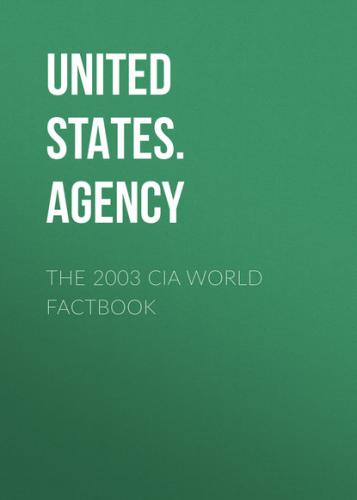Introduction Bahrain
Background:
Bahrain's small size and central location among Persian Gulf
countries require it to play a delicate balancing act in foreign
affairs among its larger neighbors. Facing declining oil reserves,
Bahrain has turned to petroleum processing and refining and has
transformed itself into an international banking center. The new
amir, installed in 1999, has pushed economic and political reforms
and has worked to improve relations with the Shi'a community. In
February 2001, Bahraini voters approved a referendum on the National
Action Charter - the centerpiece of the amir's political
liberalization program. In February 2002, Amir HAMAD bin Isa Al
Khalifa proclaimed himself king. In October 2002, Bahrainis elected
members of the lower house of Bahrain's reconstituted bicameral
legislature, the National Assembly.
Geography Bahrain
Location:
Middle East, archipelago in the Persian Gulf, east of Saudi Arabia
Geographic coordinates:
26 00 N, 50 33 E
Map references:
Middle East
Area:
total: 665 sq km
water: 0 sq km
land: 665 sq km
Area - comparative:
3.5 times the size of Washington, DC
Land boundaries:
0 km
Coastline:
161 km
Maritime claims: contiguous zone: 24 NM territorial sea: 12 NM continental shelf: extending to boundaries to be determined
Climate:
arid; mild, pleasant winters; very hot, humid summers
Terrain:
mostly low desert plain rising gently to low central escarpment
Elevation extremes:
lowest point: Persian Gulf 0 m
highest point: Jabal ad Dukhan 122 m
Natural resources:
oil, associated and nonassociated natural gas, fish, pearls
Land use: arable land: 4.35% permanent crops: 4.35% other: 91.3% (1998 est.)
Irrigated land:
50 sq km (1998 est.)
Natural hazards:
periodic droughts; dust storms
Environment - current issues:
desertification resulting from the degradation of limited arable
land, periods of drought, and dust storms; coastal degradation
(damage to coastlines, coral reefs, and sea vegetation) resulting
from oil spills and other discharges from large tankers, oil
refineries, and distribution stations; lack of freshwater resources,
groundwater and seawater are the only sources for all water needs
Environment - international agreements:
party to: Biodiversity, Climate Change, Desertification, Hazardous
Wastes, Law of the Sea, Ozone Layer Protection, Wetlands
signed, but not ratified: none of the selected agreements
Geography - note:
close to primary Middle Eastern petroleum sources; strategic
location in Persian Gulf, which much of Western world's petroleum
must transit to reach open ocean
People Bahrain
Population: 667,238 note: includes 235,108 non-nationals (July 2003 est.)
Age structure:
0–14 years: 28.8% (male 97,294; female 94,930)
15–64 years: 68% (male 266,351; female 187,473)
65 years and over: 3.2% (male 10,807; female 10,383) (2003 est.)
Median age:
total: 28.7 years
male: 31.6 years
female: 25.1 years (2002)
Population growth rate:
1.61% (2003 est.)
Birth rate:
19.02 births/1,000 population (2003 est.)
Death rate:
3.99 deaths/1,000 population (2003 est.)
Net migration rate:
1.07 migrant(s)/1,000 population (2003 est.)
Sex ratio:
at birth: 1.03 male(s)/female
under 15 years: 1.02 male(s)/female
15–64 years: 1.42 male(s)/female
65 years and over: 1.04 male(s)/female
total population: 1.28 male(s)/female (2003 est.)
Infant mortality rate:
total: 18.59 deaths/1,000 live births
female: 15.45 deaths/1,000 live births (2003 est.)
male: 21.65 deaths/1,000 live births
Life expectancy at birth:
total population: 73.72 years
male: 71.28 years
female: 76.24 years (2003 est.)
Total fertility rate:
2.71 children born/woman (2003 est.)
HIV/AIDS - adult prevalence rate:
0.3% (2001 est.)
HIV/AIDS - people living with HIV/AIDS:
less than 1,000
HIV/AIDS - deaths:
NA
Nationality:
noun: Bahraini(s)
adjective: Bahraini
Ethnic groups:
Bahraini 63%, Asian 19%, other Arab 10%, Iranian 8%
Religions:
Shi'a Muslim 70%, Sunni Muslim 30%
Languages:
Arabic, English, Farsi, Urdu
Literacy:
definition: age 15 and over can read and write
total population: 89.1%
male: 91.9%
female: 85% (2003 est.)
Government Bahrain
Country name:
conventional long form: Kingdom of Bahrain
conventional short form: Bahrain
local short form: Al Bahrayn
former: Dilmun
local long form: Mamlakat al Bahrayn
Government type:
constitutional hereditary monarchy
Capital:
Manama
